Last Updated on July 26, 2022 by
This guide covers the history, architecture and travel guide about the Chidambaram Nataraja Temple.
While on a work trip in Pondicherry, I happened to visit Chidambaram town.
It is then that I came to know about the Chidambaram Nataraja Temple and why it is considered important by the worshippers.
The car driver dropped us near a barricade. We were supposed to walk along a fairly broad road which was selling all the puja essentials – flowers, incense sticks, coconuts, etc. We reached the main entry gate which opened into a huge campus. There were sculptures all around on the walls and many temples. I started my walk around the complex, appreciating the minute details of the fine carvings.
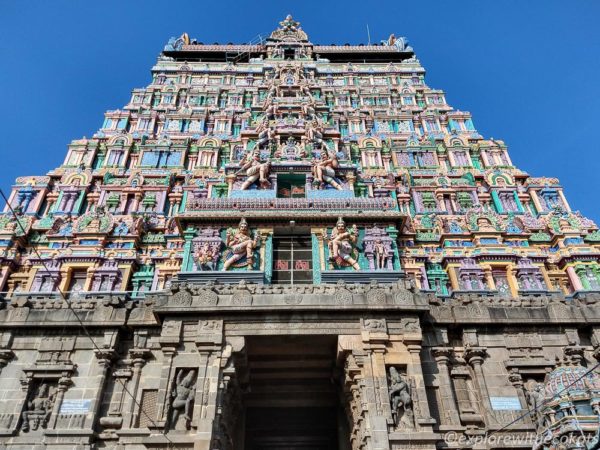
Table of Contents
About Chidambaram Nataraja Temple
Chidambaram Nataraja Temple is a Hindu temple situated in the town of Chidambaram, Tamil Nadu. The Chidambaram Nataraja statue is of Lord Shiva and is also known as Thillai Nataraja Temple. It is one of the five holiest Shiva temples, each representing one of the five natural elements.
Other Shiva temples I have visited include: Bhojeshwar Shiva Temple, Bhopal, Mahakuta Temple, Karnataka, Trimbakeshwar Temple, Nashik
The word Chidambaram is derived from two words ‘Chit’ meaning ‘consciousness’ and ‘ambaram’ meaning ‘sky’. The word can be translated into the sky of consciousness, which is the ultimate state one should attain in the mortal world. Another theory is that it is derived from chit + ambalam. Ambalam means a “stage” for performing arts.
The story of Chidambaram begins with the legend of Lord Shiva strolling into the Thillai Vanam (forest). In the Thillai forests, a group of saints resided who believed in the supremacy of magic and that God can be controlled by rituals or chanting of ‘mantras‘ or ‘shlokas’.
One day Lord Shiva strolled in the forest in the form of ‘Pitchatanadar‘, a simple mendicant seeking alms who was radiant with beauty and brilliance. He is followed by his Grace and consort who is Lord Vishnu as Mohini. The saints of the forest and their wives get enchanted by the beauty of the handsome duo. On seeing their womenfolk enchanted, the saints get enraged and invoke scores of snakes on the duo by performing magical rituals.
The Duo lifts the snakes and turns them into their personal ornaments Further enraged, the saints invoke a tiger, which the Lord skins and dons as a shawl around his waist. Thoroughly frustrated, the saints gather all their spiritual strength and invoke a powerful demon Muyalakan – a symbol of complete arrogance and ignorance. The Lord wearing a gentle smile, steps on the demon’s back, immobilizes him and performs the Ánanda Thaandava (the dance of eternal bliss), and discloses his true form. The saints surrender, realizing that this Lord is the truth and he is beyond magic and rituals.
The idol at Chidambaram Nataraja Temple is that of Lord Shiva in a dance pose.
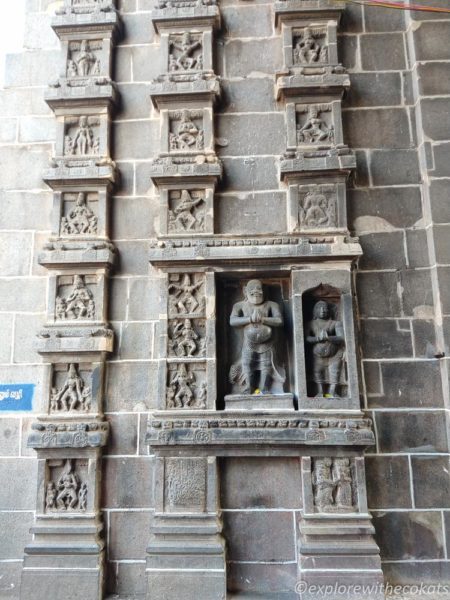
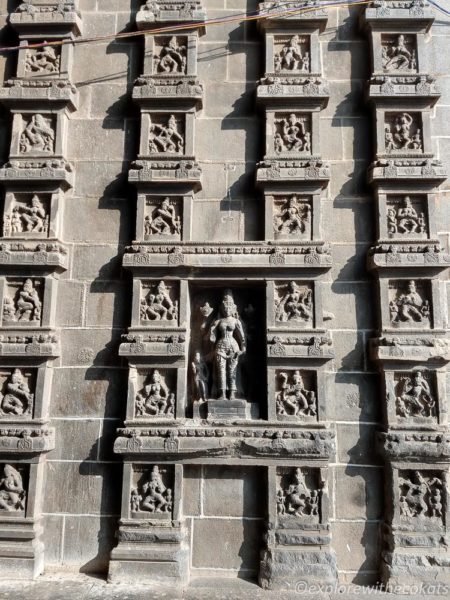
History of Chidambaram Nataraja Temple
The temple was constructed during the 10th Century when Chidambaram used to be the capital of the Chola dynasty. The Cholas considered Lord Shiva as their family deity. The notable contributions were by the Pallava, Chola, Pandya, Chera and Vijayanagara rulers during the periods of ancient and medieval history.
The Nataraj temple has undergone damage, renovation, and expansion for many years. The present structure of the temple has its roots in the 12th and 13th centuries AD.
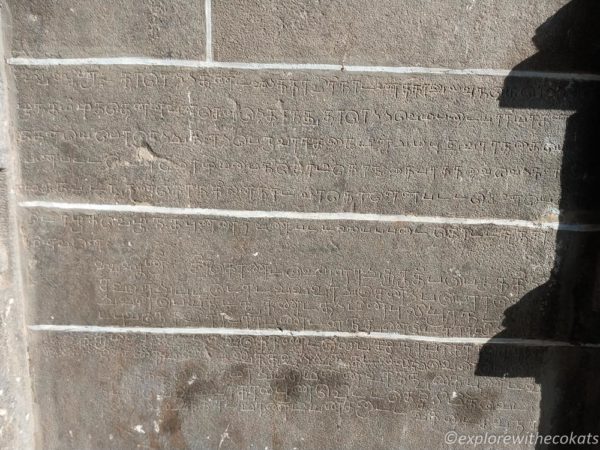
Architecture of Chidambaram Nataraja Temple
The temple complex of Chidambaram Nataraja Temple sprawls over an area of 45 acres. This is one of the rare temples where Lord Shiva is represented by an idol rather than the customary lingam.
The architecture of the temple represents the link between arts and spirituality. Although Shiva is the main deity of the temple, it also represents major themes from Vaishnavism, Shaktism, and others with all due reverence.
The Nataraja Temple is known for its attractive gopurams, carvings, five mandapams, and inscriptions. The four tall gopurams are decorated with 108 carved dance postures of Natya Shastra. There are five main principle sabhas in this temple, which are known as Chit Sabha, Kanaka Sabha, Deva Sabha, Nritya Sabha, and Raja Sabha.
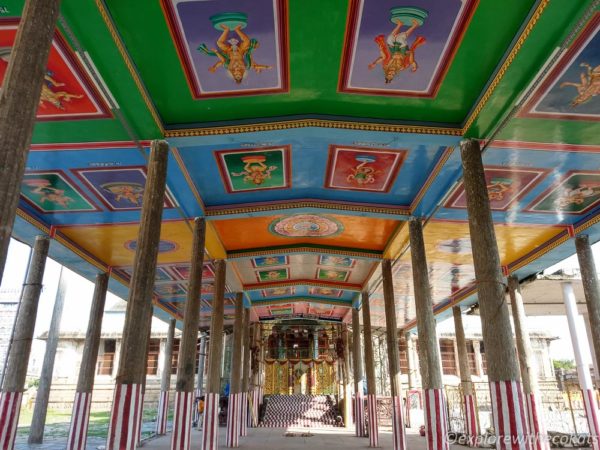
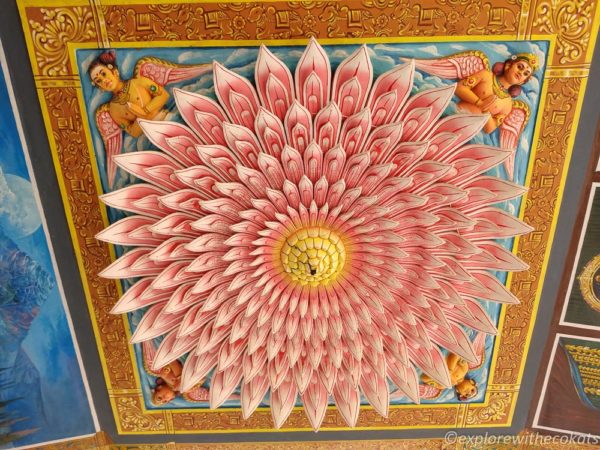
The main Sanctum – Chit Sabha
The main idol of Nataraja resides in the sanctum known as Chit Sabha or the Hall of Consciousness. It is a rectangular wooden structure on the granite base with a gilded and unusually slanting roof. Garbhgriha houses the Nataraja idol and is approached from the side unlike from the front which is the case in all temples. Due to the side entrance, one can hardly see the idol or statue for a longer duration and also because it is covered in so many layers of clothes and flowers.
Kanaka Sabha
This is the second most important sanctum in the temple complex. The daily rituals are conducted in the Kanaka Sabha of Chidambaram Nataraja Temple. The Kanaka Sabha is adorned by a gold-plated roof. The golden roof is made of 22,600 tiles representing the number of breaths of a human being on a day, and fixed with 72,000 golden nails representing the 72,000 visible and invisible nerves of a human body! The roof is having 9 ornamental conic heads (Kalasas), denoting 9 Entrances or Openings of the body.
Courtyards
There are five courtyards, representing five sheaths of a human body, kosas.
Shivaganga Tirtha
It is the main temple tank in the Chidambaram Nataraja Temple complex. It is located near the temple along the northern Gopuram. The reflection of the gopurams in the water looks beautiful. A pillared corridor goes along the water tank where one can rest, meditate or just marvel at the architecture.
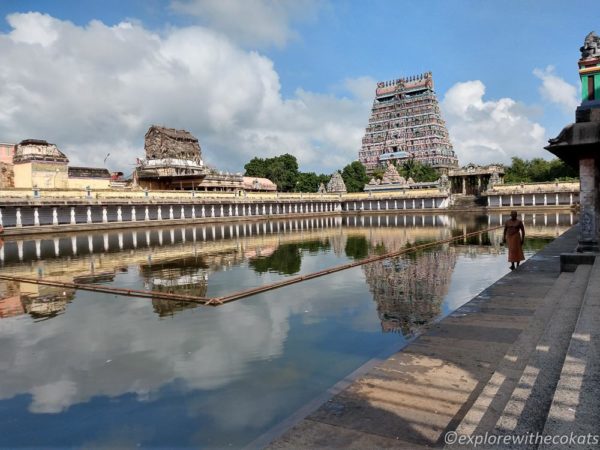
Daily Puja at Chidambaram Temple
The daily Puja begins by bringing the Padukas or the footwear of the deity in a palanquin. There are 6 different pujas that are performed throughout the day. All these Pujas involve an Abhishek of the Lingam. The day closes with Padukas going back to the palanquin. The Abhishek schedule can be seen here.
The Chidambaram temple timings are 6 am to 12 noon and 5 pm to 10 pm every day of the year.
Other must-visit temples in Chidambaram
Chidambaran is a temple town and there are many important temples that are a must-visit other than Chidambaram Nataraja Temple. Some of them are
Thillai Kali Amman temple
Goddess Kali is the presiding deity in this temple. It is the second most visited temple in Chidambaram. ‘Thillai Kali’ is a deity in anger and hence the idol inside the temple has four faces.
Chathapuram Nathar Temple
Another Lord Shiva temple is the Chathapuram Nathar Temple. This temple is believed to work in granting wishes and that is why worshipers do stop here to pay their respects.
Thiruvetkalam temple
A temple of great historical and religious significance, Thiruvetkalam is believed to be located in the same spot where Lord Shiva battled and defeated Arjuna by breaking his bow during the battle. In the Thiruvetkalam temple, Lord Shiva is worshipped as Pasupateswara.
Tirunelvayil
Also known as Sivapuri Uchinathar Temple, this temple is dedicated to Lord Shiva, worshipped here as Uchinathar.
Achalpuram Temple
In the village of Achalpuram, the Achalpuram temple is dedicated to Lord Shiva. The Shiva Lingam is entwined by a golden snake, the hood of which covers the Lingam. In this temple, Lord Shiva is worshipped as Sri Shivalokathyageshwar and as always, is accompanied by his consort Goddess Parvathi.
Is photography allowed in Chidambaram Nataraja Temple?
Yes, mobile photography and even DSLR photography is allowed for clicking the architecture and the water tank. Photography is not allowed in the main sanctum.
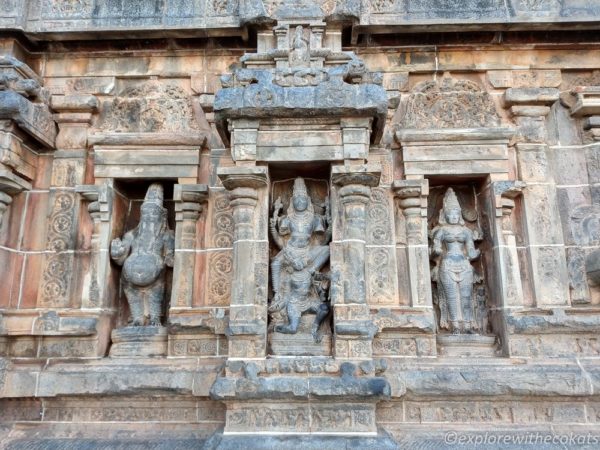
Tourist Attractions near Chidambaram
Pichavaram mangrove forest is a must-visit tourist attraction in Chidambaram other than the temples located only 30 km away from the town. It is a nature’s paradise with mangroves spread over 1100 hectares providing undulated natural views. The mangrove forest houses 20 different types of trees and 200 species of birds, crabs, turtles, and prawns, which makes it a perfect photography spot for wildlife enthusiasts.
Pichavaram mangrove forest is one of the world’s largest mangrove forests.
Shopping in Chidambaram
Like every temple town, Chidambaram has a lot to offer. Chidambaram souvenirs include idols, paintings, and posters of Lord Nataraja. These idols are handcrafted in various metals and suitable to be placed in your homes. Handcrafted toys, terracotta diyas and khadi materials are also available in plenty here.
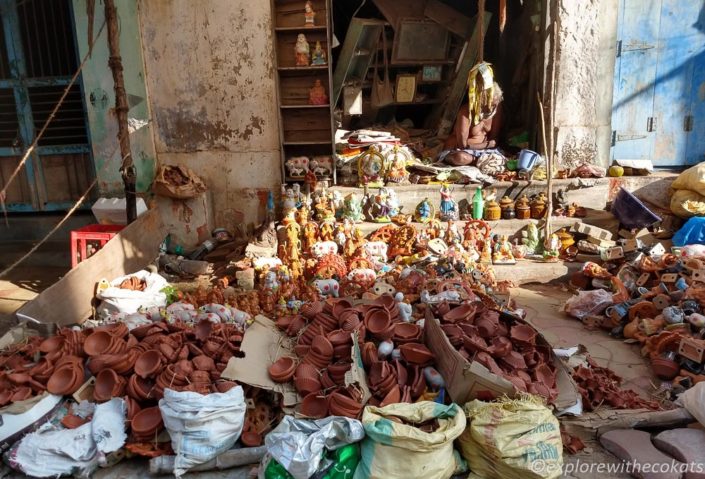
How to Reach Chidambaram
By Air
The nearest airport is Puducherry which is 65 km away and another is Chennai which is 250 km. State-run buses and private cabs can further take visitors to Chidamabaram.
By Train
Trains run from Chennai to Chidamabaram. Chidambaram lies on the mainline of the Southern Railway. Nagercoil express and Nellai express are some popular trains that pass through Vridhachalam junction near Chidambaram.
By Road
Chidambaram is on the Cuddalore-Chennai highway and frequent buses are available from major cities in Tamil Nadu to Chidambaram.
Best Time To Visit Chidambaram
The best time to visit Chidambaram is during the various festivals. A couple of annual festivals and traditions that are celebrated with utmost grandeur and pomp are Aani Tirumanjanam (June), The Dance Festival of Natyanjali, and Margazhi Thiruvathirai (Dec to Jan).
Summers could be difficult for visitors due to heat and humidity which is at its peak. Monsoon would still have humidity and make the visit uncomfortable. The best season to visit Chidambaram is in winter when it is pleasant to visit all the temples in Chidambaram.
Stay in Chidambaram
Accommodation options in Chidambaram are very basic with simple facilities as most visitors are temple worshipers. Major visitors are from the state and from cities like Chennai or Trichy which can be done within a day. Some options for staying are
Sustainable travel tips for Chidambaram Nataraja Temple
- Being an ancient heritage site of historic importance it needs to be respected by not harming the temple structures. Do not sit or lean on the carvings/sculptures.
- Do not harm the structures by carving or writing on it
- Do not enter places that are closed off, there’s a reason why they are closed.
- Respect the temple rule and do not try to photograph the main sanctum or the idol presiding there.
Love Temples? Check out more temple posts here:
- Badami Cave Temples
- Angkor Wat Temple
- Chennakesava Temple, Somanathapura
- Konark Sun Temple
- Modhera Sun Temple
- Ranakpur Jain Temple
- Kamakhya Temple Guwahati
Disclaimer: This article includes affiliate links. It means it adds no extra cost to you if you book through the link but I get a referral bonus which helps me earn a little to keep this website up and running.
Pin this post!
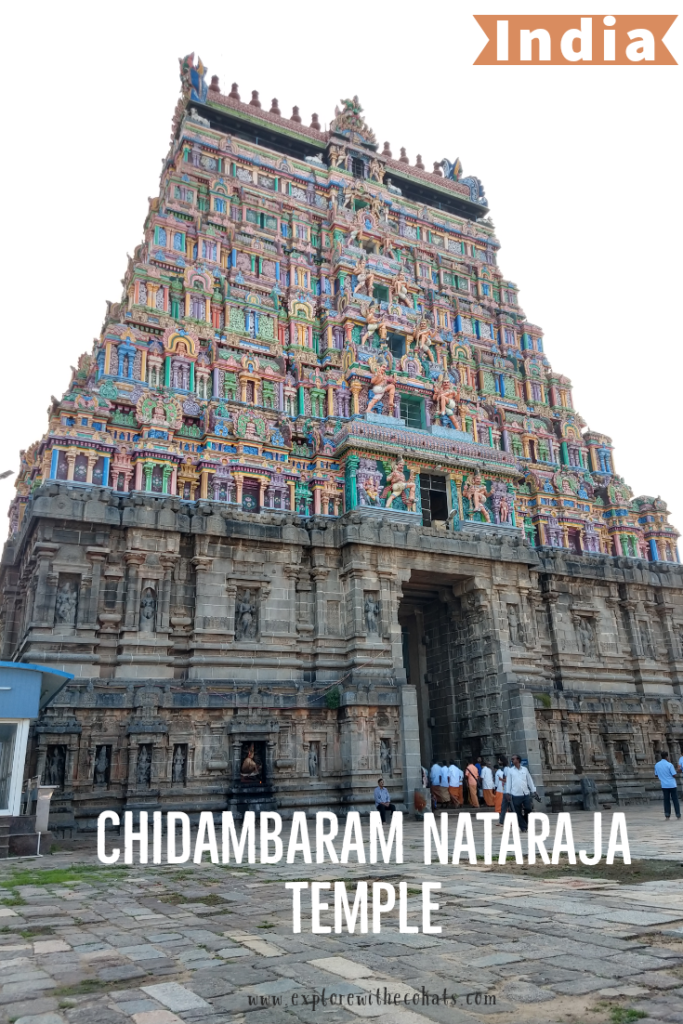
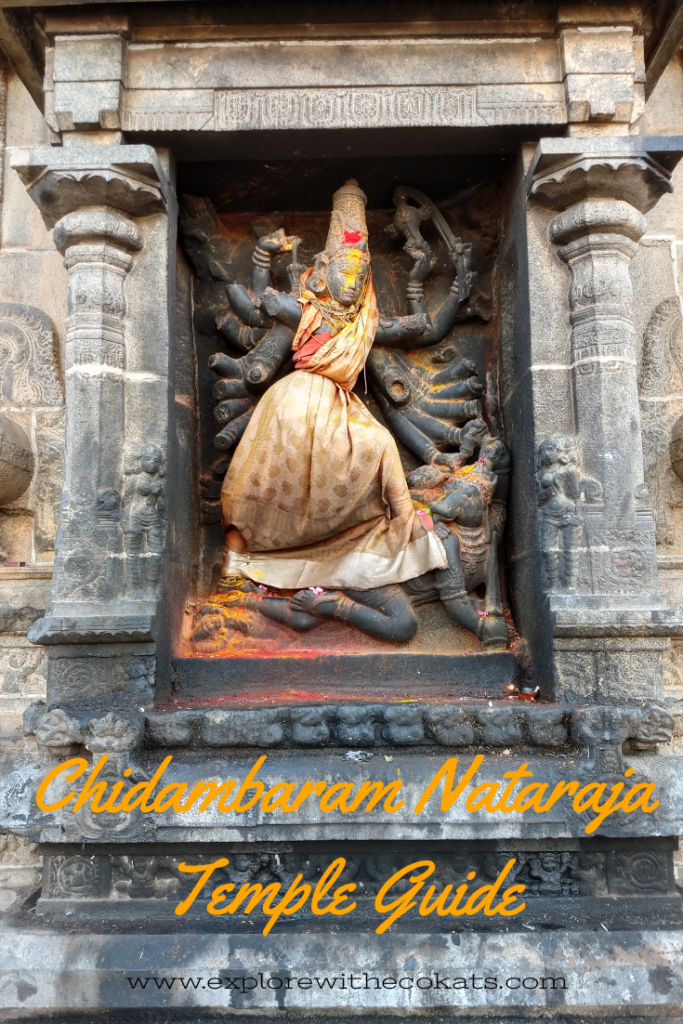

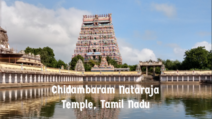
4 comments
I would love to visit India one day! The temple and the legend are so fascinating!
I so enjoy visiting places that are steeped in history and legends. This temple looks so interesting – I hope to visit one day.
This is such a beautiful temple to visit and I hadn’t heard of it before! I love all of the freshly painted colours inside, and the intricate stone work on the outside. Such a great historical site to explore!
I think that every work trip should include a little bit of time (like at least half a day) specifically to look around the location in a non-work related way. It is crazy how that’s normally considered frivolous; for a long time I also didn’t question this norm. But even small amounts of wandering gives you insight on a place, which I’ve found beneficial for almost any kind of business. The amount of executives who have been all over the world and yet know next to nothing about any of those places because they never leave the hotel and just jet in and out, is disgraceful. I hope this openness to adding time into work trips to look around is one positive legacy of the travelling millennial era.